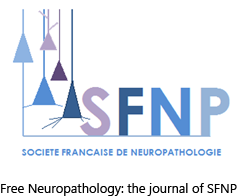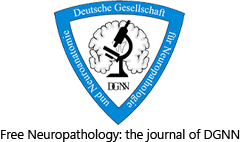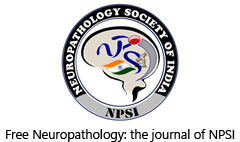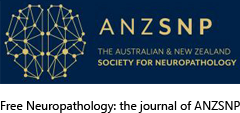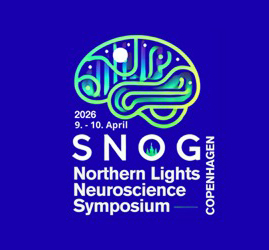Quantitative proteomic profiling of white matter in cases of cerebral amyloid angiopathy reveals upregulation of extracellular matrix proteins and clusterin
DOI:
https://doi.org/10.17879/freeneuropathology-2020-2955Keywords:
Extracellular matrix, Cell adhesion, Clusterin, Cerebral amyloid angiopathy, CAA, White matter, ProteomicsAbstract
Aims: Cerebral amyloid angiopathy (CAA) is the accumulation of amyloid beta (Aβ) in the walls of cerebral arterioles, arteries and capillaries. Changes in the white matter in CAA are observed as hyperintensities and dilated perivascular spaces on MRI suggesting impairment of fluid drainage but the pathophysiology behind these changes is poorly understood. We tested the hypothesis that proteins associated with clearance of Aβ peptides are upregulated in the white matter in cases of CAA.
Methods: In this study, we compare the quantitative proteomic profile of white matter from post-mortem brains of patients with CAA and age-matched controls in order to gain insight into the cellular processes and key molecules involved in the pathophysiology of CAA.
Results: Our proteomic analysis resulted in the profiling of 3,734 proteins (peptide FDR p<0.05). Of these, 189 were differentially expressed in CAA vs. control. Bioinformatics analysis of these proteins showed significant enrichment of proteins related to cell adhesion | cell-matrix interaction, mitochondrial dysfunction and hypoxia. Upregulated proteins in CAA included EMILIN2, COL4A2, TLN1, CLU, HSPG2. Downregulated proteins included DSP, IDE, HBG1.
Conclusions: The present study reports an in-depth quantitative proteomic profiling of white matter from patients with CAA, highlighting extracellular matrix proteins and clusterin as key molecules in the pathophysiology of white matter changes in cases of CAA.
Metrics
Additional Files
Published
How to Cite
Issue
Section
License
Papers are published open access under the Creative Commons BY 4.0 license. This license lets others distribute, remix, adapt, and build upon your work, even commercially, as long as they credit you for the original creation. Data included in the article are made available under the CC0 1.0 Public Domain Dedication waiver, unless otherwise stated, meaning that all copyrights are waived.








